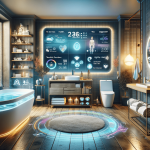The latest update to the Matter protocol marks a significant step towards enhancing the interoperability and functionality within the smart home ecosystem. This update introduces support for a broader range of appliances and incorporates features such as the ability to set scenes, which offers users a more integrated and automated home management experience. As smart home technologies evolve, updates like these are crucial for users seeking a seamless, interconnected environment where multiple devices can communicate effectively regardless of the manufacturer.
As smart home implementations have become more prevalent, the evolution of protocols like Matter is essential to address the growing demand for interconnected devices. Previously, users often faced challenges with devices from different manufacturers failing to communicate with each other, leading to a fragmented and sometimes frustrating experience. The introduction of Matter aimed to eliminate these barriers by ensuring that all compliant devices could interact smoothly, promoting a more unified smart home environment.
This recent update not only expands the list of compatible devices but also enhances user control by enabling the creation and management of scenes. This feature allows users to configure specific settings for multiple devices with a single command, significantly improving the ease of managing a smart home. Such updates are a response to user feedback calling for greater versatility and simplicity in controlling their home environments.
Expanded Device Compatibility
The inclusion of additional appliance types in the latest Matter update significantly widens the scope of what users can integrate into their smart home systems. From kitchen appliances to security systems, the ability to connect and manage these devices through a single protocol simplifies the user experience and encourages the adoption of smart home technology.
Enhanced Scene Management
With the capability to set scenes, users can now program their devices to operate together based on specific activities or times of day. For example, a “Good Morning” scene could raise the blinds, start the coffee maker, and adjust the thermostat with one command. This level of automation was previously complex and limited to users with devices from the same ecosystem.
Practical Applications
- Users can automate daily routines, increasing efficiency and comfort.
- Enhanced compatibility reduces the need for multiple control systems.
- Ability to manage a more extensive range of devices broadens user choice.
The expansion of the Matter protocol is not just a technical update; it represents a shift towards more user-centric smart homes. By enabling more devices to communicate under a single standard, Matter is setting the stage for more robust and adaptable smart home ecosystems. This approach not only enhances the current usability of smart homes but also paves the way for future innovations in home automation.
As this technology continues to spread, it will likely stimulate further developments in IoT device production and smart home services. The focus on interoperability and ease of use seen in this update points towards a future where smart homes are universally accessible and more intuitively managed, making the technology a practical choice for a broader audience. Hence, this update is a pivotal development for users and manufacturers alike, fostering a more interconnected and efficient environment for all.










